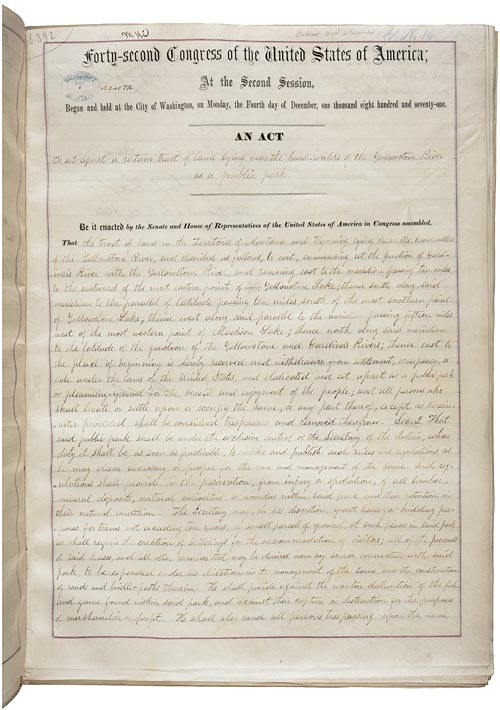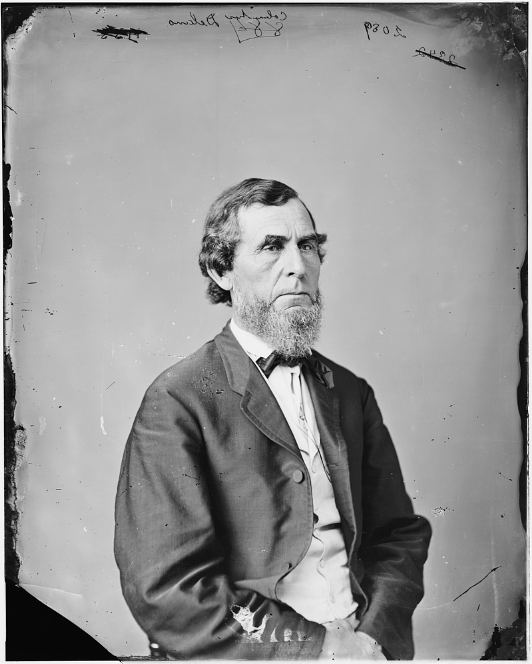
Yellowstone National Park Protection Act
The Yellowstone National Park Protection Act of 1872 federally protected a section of public lands, ensuring no Euro-Americans would settle there. These 2.2 million acres of land, located in present-day Wyoming, Idaho, and Montana, were set aside for the pleasure and gain of the public. President Ulysses S. Grant signed this act on March 1, 1872, successfully establishing the United States's first national park.

"[The park] is hereby reserved and withdrawn from settlement, occupancy, or sale under the laws of the United States, and dedicated and set apart as a public park or pleasuring-ground for the benefit and enjoyment of the people..."
The park was put under the care of the Secretary of the Interior, who was in charge of decisions regarding the park. At the time of establishment, the Secretary of the Interior was Columbus Delano, making him the first to manage Yellowstone. Delano was in charge of buildings and accommodations within the park, handling the funds, and enforcing park rules, making his job essential to keeping the park running smoothly.
"That said public park shall be under the exclusive control of the Secretary of the Interior, whose duty it shall be, as soon as practicable, to make and publish such rules and regulations as he may deem necessary or proper for the care and management of the same."

Columbus Delano was the 11th Secretary of the Interior, serving from 1870-1875. Yellowstone National Park was viewed as one of his greatest accomplishments.